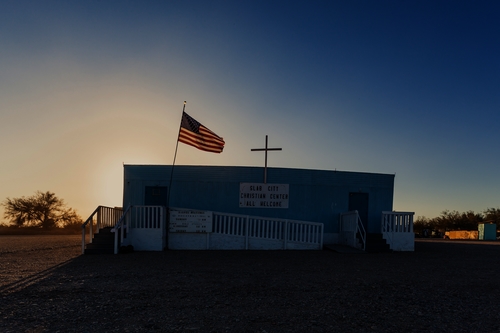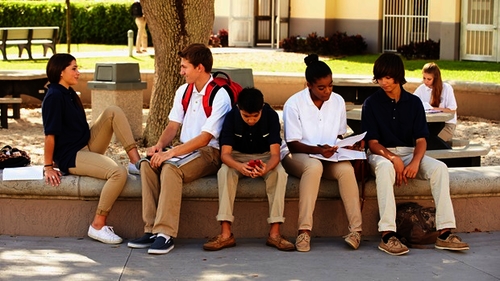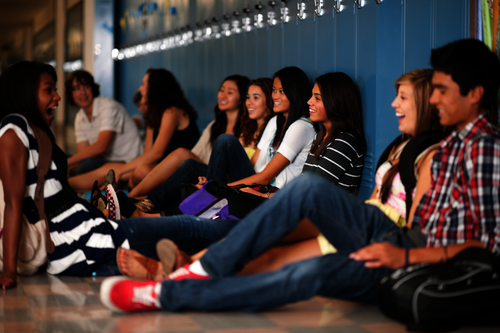Reading Resident Aliens [by Stanley Hauerwas and William H. Willimon] is a kind of Rorschach test: the way a mainline Methodist reads it will be different from the way someone like me—an evangelical (of sorts) in the Reformed tradition—does. An heir of Abraham Kuyper encouraged to "transform culture," I learned from Hauerwas and Willimon how often, under the banner of cultural transformation, we march ahead into cultural assimilation. It wasn't until I read Resident Aliens that I realized I lacked a functional ecclesiology. Hauerwas and Willimon woke me up to a sense that the church has its own cultural center of gravity. We didn’t have to figure out how to hook up "Christ" with "culture" because the body of Christ is a culture, and specifically a formative culture. For those of us breaking out of fundamentalism, the Reformed tradition offered a "common grace" license that enabled us to say yes to culture. But in our new enthusiasm for affirmation, we tended to lose the other side of Kuyper’s approach—an emphasis on antithesis. Resident Aliens was apocalyptic for me in the sense of unveiling the deformative power of those other spheres of life we were so eager to affirm and transform. Read the rest of this article at The Christian Century.

Church against state?
September 18, 2014

Do Christian Schools Produce Good Citizens? The Evidence Says Yes.
According to their critics, private Christian schools foster an attitude of isolation and withdrawal from society. And according to their boosters, public schools provide a unique and essential preparation for citizenship in a diverse nation. For the past five years, my colleagues and I at Cardus have been studying these claims, and last week, we released a new study that shows just how little data exists to support them. Do private schools (whether religious or not) foster social isolation? Do public schools uniquely help to create the "social capital" that comes from diverse friendships and working relationships? Based on the data we released last week, the answer seems to be no on both counts. Adult graduates of Evangelical Protestant, Catholic, non-religious private, and public schools were all as likely to have a close friend who was an atheist or of a different race. The only statistically significant difference we found was that Evangelical Protestants were marginally less likely to have a close gay or lesbian friend—about 57 percent of evangelical Protestant graduates, compared to 69 percent of public school graduates, report a friend or relative who is gay or lesbian. The Cardus survey, collected in March 2014 and analyzed by the team at the Cardus Religious Schools Initiative at the University of Notre Dame, was designed to give a comprehensive account of how different kinds of high schools contribute to the academic achievement, cultural engagement, and spiritual formation of their graduates. Read the rest of this article by Ray Pennings at the Christianity Today website.
September 17, 2014

Do Ontario Private Schools Get a Bad Rap?
September 4, 2014

Why We Must NOT Reopen the Constitution
Those who want Canada's Constitution repaired, renewed, revitalized, re-jigged, re-worked, or otherwise re-opened, need to spend a working vacation with a bomb squad. They need refreshment in their understanding of what happens when something that isn't right goes completely wrong. The rest of us should be given leave to head for the hills. If that sounds alarmist—hey, it's just a constitution—it is probably because too many of us have already forgotten the catastrophe of the last round of nation building in the late 1980s and early 1990s. In the kind of paradox that particularly bedevils politics, it was actually a well-intentioned attempt to fix the horrendous damage done by the previous round of history-making dreams. And it put us squarely on the road to hell. Read the rest of this article at the C2C Journal website.
September 3, 2014

Unlike animals, human workers shouldn’t be electronically banded
Every British cow is required to wear an ear tag that tracks its movements from birth, through various farms and feedlots, until it ends up on the grocery store shelf. If that meat ends up on the shelves of British grocery giant Tesco, it could be that it was put there by an employee wearing a similar tag. Earlier this year, reports surfaced that “employees at the company’s Dublin distribution center are forced to wear armbands that measure their productivity so closely that the company even knows when they take a bathroom break.” Yes, Tesco workers must wear a device similar to that worn by “every bovine animal in the United Kingdom and the European Union.”Read the complete article at the National Post website.
August 27, 2014

Has anyone seen last year’s promising freshmen?
Dear College Sophomore, A lot can change in a year, right? At this time last year, you were a wary and excited freshman. Moving into the residence hall brought both the thrill of newfound independence and nervous dislocation from home and family. But you soon settled in and focused on why you were here: to learn. Sometimes going to those first-year classes felt like drinking from a fire hose. But you couldn't get enough of the new worlds that your instructors invited you into: Homer's Greece, Augustine's Rome, John Locke's England, C.S. Lewis's Oxford, Toni Morrison's Kentucky. And trust me, we noticed. You are the student that teachers dream about, the one we talk about in the faculty dining room, the one who "gets it." You didn't just treat your freshman classes as an inconvenience, the price of admission to cheap football tickets and fraternity parties. You signed up for the adventure of intellectual exploration that college is meant to be. Yet I couldn't help but notice a change in you already last spring. And now that classes are starting up again, I see a familiar shift in your stance toward the world. If the past is any guide (and it is), I worry that this is the sophomore you might become: It's not just that you're a year wiser; you carry the air of the newly enlightened. Your curiosity has hardened into a misplaced confidence; your desire to learn has turned into a penchant to pronounce, as if wisdom were a race to being the quickest debunker. You used to wonder about the social vision behind Philip Larkin's poetry, or whether Thomas Aquinas's notion of natural law could really work in a secular age, but now you seem more intent on unmasking "micro-aggressions" and detecting colonial prejudice in a canon that you increasingly disdain. I've seen it before—I see it every year. And I know where it is coming from. I know those colleagues who confuse teaching with advocacy—those colleagues who think they are broadening your horizons and opening up your world and disabusing you of your former narrowness. Teachers who delight in debunking "traditional" values that your parents espouse, teachers for whom cultural criticism consists of scoffing at anything "conservative." They were my teachers, too. I know how it feels to be invited into this exclusive club. I understand the joy ride of liberal enlightenment. But what if they're asking you to trade one sort of narrowness for another? It might feel like they're making your world more expansive, but they're actually closing it off. Dangling the badge of maturity and knowingness, they subtly replace teaching with indoctrination. Sharing the ironic distance that shores up this self-perception, they swap laughs with you in the morning about the latest takedown by Jon Stewart or Stephen Colbert (wink, wink, we are the ones who know how things really work!). Unlike during those first few months of freshman year, your thinking on almost any subject now is becoming easy to predict. The causes you're passionate about, while not without merit, are almost clichéd. You seem less interested in mining the complexity of problems and more interested in making a hasty display of moral outrage and coming down on the correct side of any debate—because of course there's only one right way to think. That didn't used to be the case. Last fall I could see the wheels turning for you. I could almost sense when your mind was swirling with discovery, entertaining unfamiliar ideas, forging a sense of yourself and your commitments—questioning some prior beliefs, to be sure, but with a sense of maturing conviction that didn't shut itself off from reality. You were coming to appreciate both the complexity of the world and the range of wisdom available to us from our forebears. That's a laudable posture, not just for college but for life. So don't buy the story that the really smart people on campus are the ones who parrot the platforms of progressives. Bring a little suspicion to those who delight in their hermeneutics of suspicion. Punch through the posturing and self-congratulation and ask the questions you were asking last fall—the ones that forced me to consider my own thinking anew. You're too smart to settle for ideology, and it's too soon to stop learning. We're just getting started.
August 15, 2014

Milke and Van Pelt: Why private schools should receive equal funding
In a liberal democracy, where critical thinking is often touted as an end goal in education, it was disappointing to read Calgary MLA Kent Hehr’s attack on parental choice in education (“Private schools divide pupils by wealth and religion,” July 26). Hehr’s arguments ignore the benefits of school choice and the underlying reality about how human beings function. He thus overlooks why choice is invaluable in education — because it leads to human flourishing. By not going deeper, Hehr, also the provincial Liberal Party’s education critic, thus repeated the tired and misleading clichés about independent schools. They’re for rich kids and religious kooks (although Hehr is too polite to phrase it that way). The concern over faith is misplaced. The point of a free society is to ensure diverse viewpoints are protected and encouraged — even when others disagree, especially in the education system, lest stultifying non-critical thinking become the norm. Hehr is also wrong on the facts. He fails to consider the research evidence that non-government schools provide solid, and in some cases exemplary, academic, social and cultural results for individuals and for society. A 2013 OECD analysis of the Programme for International Student Assessment (PISA) math performance scores found that Canadian 15-year-olds from private schools significantly outperformed their peers from public schools. This was true even after controlling for economic, social and cultural status. A 2012 study by Cardus compared graduate outcomes for Canadian adults from different school systems — public, separate Catholic, and various independent school systems. The findings were clear. Graduates from independent schools are significantly more likely than their peers to contribute to civic society — to vote, volunteer, and donate (all again, after controlling for a variety of socio-economic factors that might otherwise explain the differences). Furthermore, parents don’t just “feel” — as Hehr claims — that the public system isn’t good enough for them. In a 2007 Ontario survey on why parents choose private schools and in a 2009 analysis of stories told by parents about choosing private schools, many reported that they have tried public schools for their children but were forced to look elsewhere. They leave public schools for a variety of reasons: bullying, lack of teacher care or availability, concerns with the curriculum, neglect of their child’s special needs, or poor academic results. And many stay with a private school once they arrive because of caring and attentive teachers, positive academic performance, safety, and improvements in their child’s social life. Hehr argues that any education spending for independent schools misdirects “government resources.” Such “government resources” are also known as the tax dollars of every parent. And Hehr asserts their money can only be spent on so-called “public” institutions. If that same standard were applied elsewhere in government, welfare recipients would be forbidden from spending their taxpayer-funded income at private grocery stores — only government outlets (if such stores actually existed). The point, of course, is not private or public provision but to ensure that everyone has an abundance of food to eat or is abundantly educated, regardless of who provides the food or the education. Hehr, and other like-minded allies, ignore the effect of monopolies on human behaviour and on the service to be delivered: Little innovation, sub-par service, few reasons to improve, and the misallocation of resources. For example, extra education tax dollars are often funnelled to people entrenched in the system, without improving the quality of education. The 2007 special payment of $1.2 billion into the Teachers’ Pension Plan in Alberta to make up for yet another shortfall is a perfect example. Hehr needs to think more carefully about how governments can create educational equity. It makes sense to recognize the results achieved in independent schools. When local communities are given more control — whether independent or charter schools, home-based educational programs, or public schools given more local authority — administrators, parents and teachers can achieve excellent results, results that benefit individuals and society. A system where all taxpayer dollars are spent on one provider, the “public” system, and not among the schools that parents choose, would be rejected as absurd and unhelpful if we were talking about welfare payments and grocery stores. It’s only in education — and regrettably, the mind of a provincial politician — where, despite evidence to the contrary, political attachment to monopoly thrives.
August 3, 2014

The Myth of Suburban Monochrome
A lot of Canadians live in suburbs. Conservative estimates suggest that somewhere around 21 million Canadians live in areas characterized by detached homes on large lots serviced primarily by automobiles. This arrangement is our dominant built form and is a powerful force shaping our lives. The pop culture stories we tell ourselves about suburban life are, of course, imported from the US and include themes of housewife desperation, teenage purgatory, complicity in global warming and careless consumption. Certain critiques imply that the only redemption possible for suburbanites living in such banality is to migrate to a rural area and raise free range chickens—or move downtown, put on hipster shoes and buy a transit pass. But with only a small minority of Canadians currently living in rural or urban core areas it is hard to imagine what such a mass migration would look like. Most of us don't live in high density areas and are not likely to do so anytime soon. Read the rest of this article on The Municipal Information Network website.
July 23, 2014

Bricks and Mortar Masters
I remember watching 2001: A Space Odyssey for the first time and feeling that slow but steady building of dread as Hal, in his even and increasingly creepy voice, began to draw his digital noose tighter and tighter around the crew of Discovery One until a sole survivor is left. There is much to be said about what has become one of the most influential films of all time. I only want to say that the idea of technology meeting us directly as Hal does the crew is our typical vision of how what we make might indeed begin to try to make something of us. While we worry about robots taking over the world (one of my favourite genres—I commend you to the very aptly titled Robopocalypse if you need a summer read and perhaps sometime in the future a summer movie to watch if Spielberg can get the money together), we would be as well served to worry about how the design of our buildings, neighbourhoods and cities shapes the way we interact. We think less often about how other forms of technology play their shaping role among us. Some of those very non-Hal agents that we live with are the offices, houses, schools, and other buildings arranged across the landscapes of our communities and cities. Here is a proposal: What if we thought of our buildings as part of the population of our lives? I'm not suggesting they are alive in the way that Hal was (though Robopocalypse shows how that might happen). Christopher Alexander has estimated (Vol. 2 of his remarkable The Nature of Order) that there may be about 2 billion buildings in the world. If we round off human population to 7 billion, then there are roughly four people per building. With a 50-100 year renewal, we need to build about 30 million a year to keep up. Alexander points out that with 500,000 architects globally, each would have to build 60 per year. That is of course very interesting in itself and reflects that most buildings are not designed by architects. But I digress. We have among us, around us, between us, a population of agents that is very numerous indeed. Spaces within and between buildings define significant aspects of our experiences as a human civilization. How much can we actually shape our space? Very often, very little. Most of us are lucky if we can personalize our workspace or decorate a room or two in our homes the way we like. But, then, how much does space influence socialization? Don't we socialize in spite of space? We just find a way, a place. Certainly that is true. But we might consider what William Whyte showed us in 1979 via his study of how we humans use plazas in cities. His “The Social Life of Small Urban Spaces” is highly instructive and often very humourous (I want to thank Greg Spencer (Munk School) for reminding me in a very recent coffee conversation that the film remains worth watching). I don’t think that buildings boss us around completely, but the ways we design space, right down to some rather small details, are clearly active agents in shaping our human lives. The play area that looks like a construction site featured early in the film is hilarious—we would never allow it today with our McPadded and legally sanctioned safe (translate: boring) playgrounds. Some of Whyte's insights are that people sit where there are places to sit. If there is no seating in a plaza, there is much less socializing. They calculated it as 1 sitting place for every 30 square feet of plaza. It was also observed that socially dense areas get denser, we like the comfort of a herd, even if we don’t know the people in it. We also like corners, ledges, double wide benches and moveable chairs, even if we move them in weirdly random ways, we just want to be able to tweak a space before we commit. There are many other insights and significant amounts of other research have run down the path of humans and our relationship to spaces, I just want to say that our buildings are not in total control but they are far from non-factors in our efforts to build human connections and deepen community. In his book, The Nature of Place, Avi Friedman adds his own insight about needing human places to eat, to meet, to read and to pass the time. When the shaping of those spaces comes from large organizational entities like planning departments, courts, or government regulation, it is well worth asking if those larger processes enable us to adequately assert what we need together rather than just what the codes and structures need. Friedman notes that the first set of comprehensive zoning bylaws enacted in Canada occurred in Kitchener, ON, in 1924 under the guidance of Thomas Adams and Horace Seymour. How have such embracing directives changed the dynamic between our human societies and the society of buildings and spaces that structure our interactions? A great, deal and in rather complex ways, I would suggest. A final anecdote. JG Ballard wrote a novel in the 1970s called Concrete Island which I recently read. The premise is that a successful architect goes off the road in his Jaguar and ends up stranded in the space created by three large highway structures. Once there, the isolation enforced by what has been built profoundly changes the shape of Maitland’s life. Though passive in one sense, in another he becomes the Robinson Crusoe of car-saturated modernity. The space was far from neutral, even if it was not exactly fully in control of what happens to Maitland and can’t be held responsible in the way a human agent might. So, while our buildings may not be the boss of us, we would do well to attend to the role of our 2 billion silent citizens who do play a role in shaping who and what we are.
June 20, 2014
